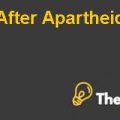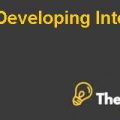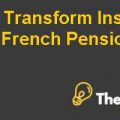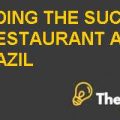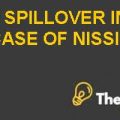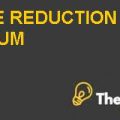Background
The operations of the famous restaurant chain known as Porcini Inc. began in the year 1969 in Boston. It is one of the leading restaurant chain in India which is family owned. The company provided its customers with an outclass service and it differentiated itself on the basis of the outstanding service, quality of food, location, branding and the ownership. The company had generated huge sales and profits over the past years and the revenues of the company have reached a level of $ 94.3 million in the year 2010, however, now the restaurant chain has reached a point of saturation and the growth has been stagnant.
In order to come out of the maturity stage of the business cycle, the management of the restaurant has been looking out for certain opportunities to expand the business and growth the business. Over the past years, the company had won the hearts of many customers in its local market based upon the different brand personality of the company and its brand. However, now the retail chain management was considering the option for penetrating with the same brand image in the international market as well.
This is an important opportunity to cope up with the stagnant revenues and the growth of the business. However, a range of barriers were hindering this move of the company which included the huge capital investments required for investing in the international market, threat of the competitors in the international market and the limited access to the price real estate sites in the international countries.
Problem Statement
The real problem that was being faced by the management of Porcini Inc. was that the rapid growth of the company had failed due to a number of the constraints faced by the management. On the other hand, now it was also failing to become one of the powerful brands in the market. Tom Alessio, the marketing vice president of the company was now faced with the dilemma to find a solution this problem and make the company grow again. A range of options had been considered by him and in order to choose the most feasible option, a hurdle rate of 6% needed to be maintained. A detailed analysis and trade off needs to be performed for each of the option before a final decision is made.
Analysis
Porcini Inc. has always wished to maintain the high level of the service and the best quality of the food for its customers. The brand recognition among the customers of the company was quite low when compared to its competitors such as the Denny and Olive Garden, but since the restaurant chain was family owned it had more power and discretion over the decision making of the brand and sustaining the brand image and brand awareness of the chain.
The first idea through which the management of the restaurant wants to build its customer base and expand the business was through setting up a company owned restaurant (Keller, 1993). This would be a low cost restaurant, targeting the specific group of the customers. Although, this restaurant would face indirect competition from some of the competitors such as Denny, however, the overall level of the competition intensity was low. The only sources of the competition were the fast food restaurants and full service chains like Denny. Along with this the concept of a low cost restaurant, would place strong emphasis on the importance of the quality of the food and the level of the desirable service by the customers of the restaurant.Porcini’s Pronto “Great Italian Cuisine without the Wait!” Case Solution
In order to monitor the performance of the employees of the restaurant, a customer questionnaire system had been devised through which all the visiting customers provided feedback and recommendations on the quality of the food and service level (Mittal, 2010). The customers were motivated to fill in the questionnaires as they were provided with discount cards. As a result of this incentive, the customers would be more likely filling the questionnaire, thus increasing the ratio from 38% to 78%. Although, the purpose of the questionnaire was to evaluate the performance of the employees, however, it did not consider many other important things such as the time taken for paying bills, cleanliness, ambience, food servings and the time taken to fill an order. No matter which of the option is selected by the management of the company, it could achieve operational efficiency through the adoption of the time and demand management strategy. Furthermore, under each of the options described below, the management will have to hire highly skilled staff in order to sustain the organizational efficiency...............................
This is just a sample partial case solution. Please place the order on the website to order your own originally done case solution


